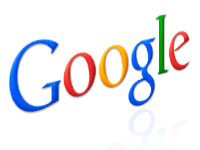
Google on Friday announced its purchase of online ad fraud fighter Spider.io.
It initially will include Spider’s fraud detection technology in its video and display ad products.
Over time, Google will incorporate Spider’s iFramed ads view technology in its products. Its long-term goal is “to improve the metrics that advertisers and publishers use to determine the value of digital media,” according to Neal Mohan, Spider’s VP for display advertising.
“This is an excellent move for Google,” said Mukul Krishna, senior global director of digital media at Frost & Sullivan.
“There are tens of billions of dollars involved,” he told the E-Commerce Times.
What Spider.io Does
Spider’s anti-malware technology identifies in real time the type of automated agent responsible for each individual ad request. It’s the one Google will implement first.
Its other technology, which Google will implement later, lets advertisers measure ad viewability across all major browsers, ad exchanges, ad networks and ad servers — even in cross-domain iFrames. This is the first technology that can measure the viewability of iFramed ads across the Chrome and Safari browsers.
The antimalware software is important, because botnets use automated agents to hijack Internet-enabled devices and thus commit one of two types of ad click-fraud, Spider said.
One type of fraud has the attacker running fully automated browsers on hijacked devices without the device owner’s knowledge. Those browsers visit websites containing ads the hacker has selected, simulating mouse movements and ad clicks.
The other type involves hijacking browsing sessions when a targeted device is used. They lead to four types of attacks: the device owner’s clicks may be redirected to websites selected by the hacker; Web pages may show up in unexpected pop-up windows; Web pages may be hidden in pop-under windows beneath the device’s active browser windows; or ads may be surreptitiously injected into Web pages visited by device owners.
Oh, Robot!
Automated traffic, or “non-human traffic,” as comScore describes it, massively inflates the number of media impressions associated with digital content. NHT increased from about 6 percent of all Web traffic in 2011 to 36 percent in 2012.
Only 2.8 percent of ads that appear when malware is running on an infected computer are viewable by the user, Comscore’s figures show.
Further, since malware processes frequently generate a new cookie for the user’s PC each time it makes a call, this can “significantly inflate” publishers’ Web analytics reports for both unique cookies and visitors, and pages viewed. Publishers are “simply incapable” of distinguishing this NHT from real user traffic and clicks.
For example, Marketing Pilgrim was under attack for most of 2012 by a bot that made it difficult for the site owner to properly use Google Analytics. The site used Spider.io to identify the attack’s characteristics and block the offending browsers.
The Chameleon botnet alone cost display advertisers more than US$6 million a month in lost revenue, Spider estimated last year. It was the first to target display advertisers at scale, rather than text-link advertisers.
Gold, Gold Gold
Internet advertising revenues in Q3 2013 hit a record high of about $10.7 billion, showing 15 percent year-over-year growth, according to figures from the Internet Advertising Bureau.
Worldwide digital ad spending, which topped $100 billion in 2012, accounted for about 20 percent of total ad spending, eMarketer figures show.
Digital ad spending will account for 25 percent of all ad spending by 2016, the firm predicted.
Google is by far the leader in the digital ad market, with 31.9 percent of global market share, totaling more than $38 billion. Closest rivals Facebook and Yahoo respectively had about 5.6 percent of the market, worth $6.7 billion, and 2.9 percent of the market, worth $3.4 billion.
Google’s acquisition of Spider may be crucial to its success.
“Google has worked hard to convince advertisers that bot fraud is not a problem — yet today’s acquisition of Spider.io suggests that it doesn’t have [bot fraud] as much under control as it would like us to believe,” Andy Beal, managing editor of Marketing Pilgrim, told the E-Commerce Times.
The purchase “might tilt advertisers more towards Google and they will be able to charge more,” Frost’s Krishna remarked, “because they will have a higher probability of ensuring ads will be viewed on the sites and by the viewers selected by the advertisers.”























































Social Media
See all Social Media